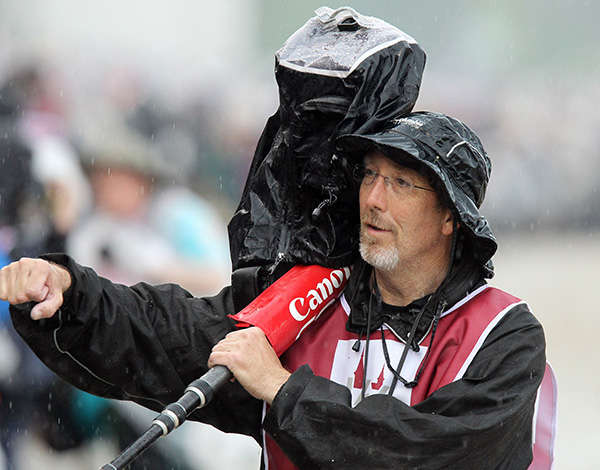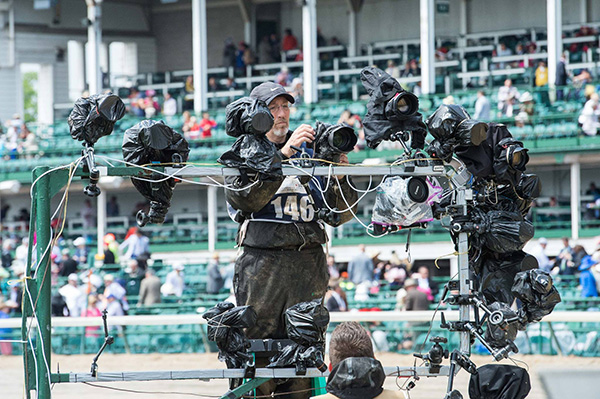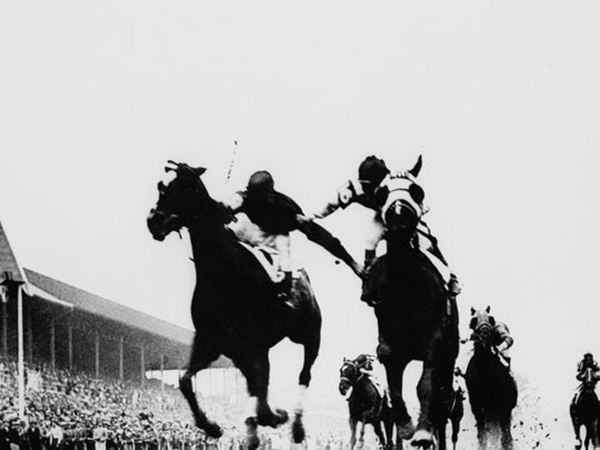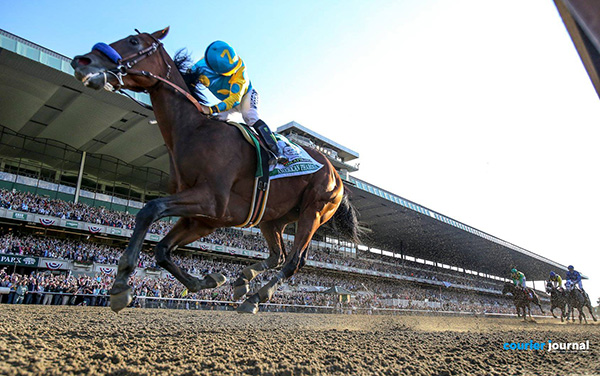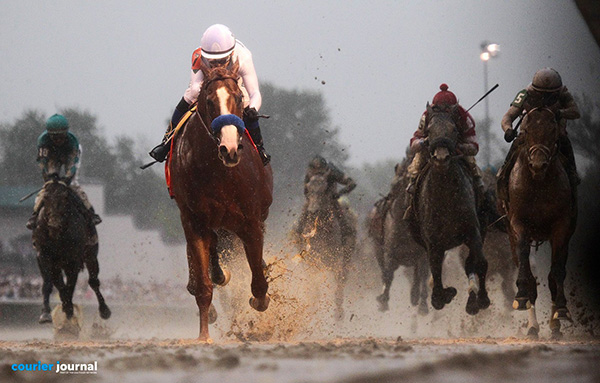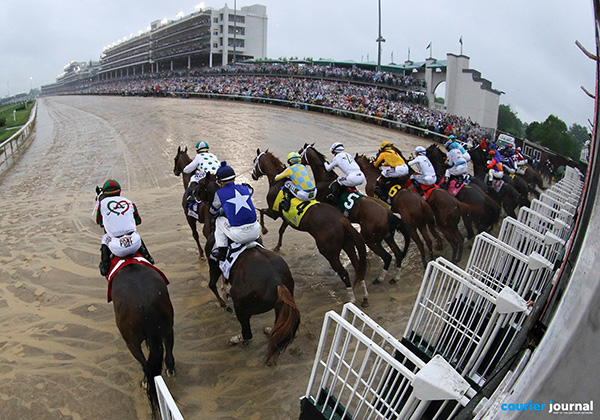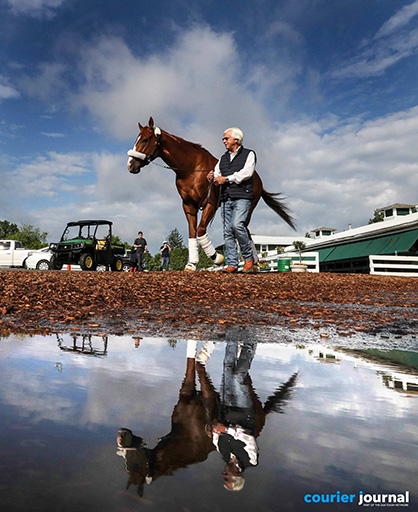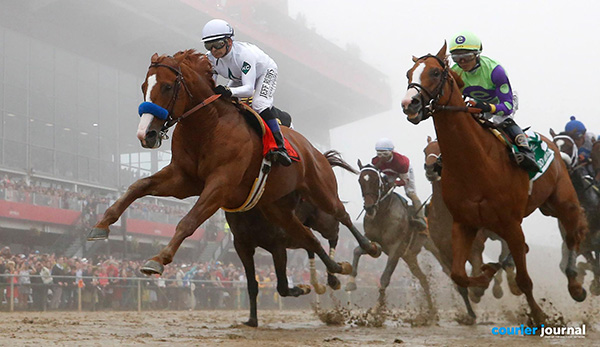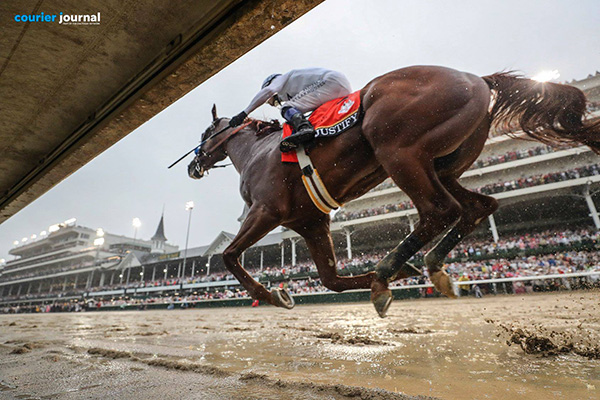My Life’s Work in Under 2 Minutes
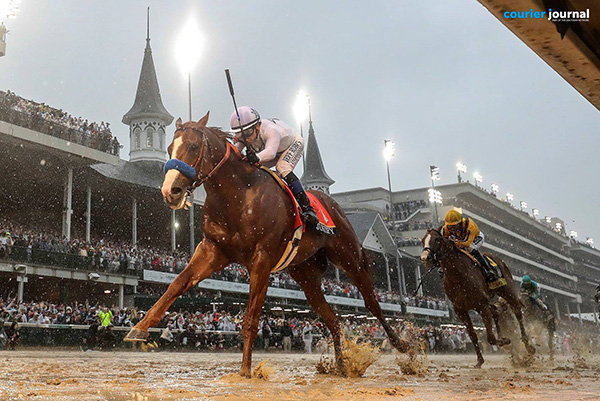
Justify and Mike Smith winning the 2018 Kentucky Derby. Photo Credit- Michael Clevenger and Christopher Granger
By: Brittany Bevis
“The Kentucky Derby had heavy rain. The Preakness had dense fog. I’m going to go ahead and guess the Belmont will have a plague of locust or pestilence.”
– Courier Journal Photo Manager Scott Utterback
Utterback’s humorous prediction is something that Kentucky-based photographer, Michael Clevenger, certainly hopes will not come to pass when he travels to New York this weekend as Justify makes his bid to become the next Triple Crown champion. Clevenger, who’s been a photographer at the Louisville Courier Journal for 20 years, has had the opportunity to use his camera lens and keen eye to capture some truly memorable moments in time, many of which happen at the race track.
“While my memory is a little fuzzy, I believe that this was my 24th Kentucky Derby,” he says. “As a news photographer, my responsibilities on any day can fall to news, sports, food, fashion, trends, and politics. If it’s in the news, it’s very likely that I’ve covered it at one time or another.”
One of his iconic photos was taken at the Kentucky Derby just a few weeks ago, when Justify shot onto the national stage leaving the pack behind during a race that was named by many as the soggiest in the event’s history. But the blinding rain, flooded ground, and dismal light did nothing to dismay Clevenger and his crew, who took some incredible shots as Justify began his journey towards earning his place in history.
How were they able to capture the race from so many different perspectives? It all comes down to teamwork. Numerous cameras, button triggers, and reliable camera gear certainly doesn’t hurt either… especially considering that the Kentucky Derby is known as the “fastest two minutes in sports.”
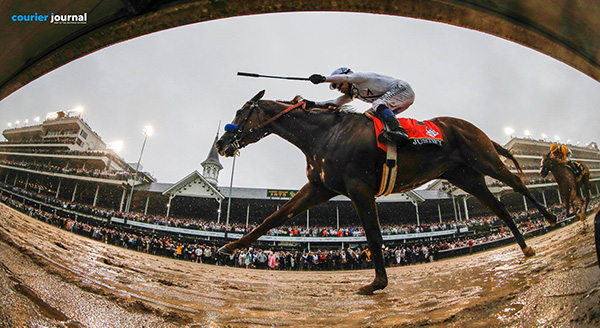
Justify with Mike Smith pointing towards the finish line at the Kentucky Derby. Photo Credit- Michael Clevenger and Kelly O’Neil Arnold.
“They cover that last 1/4 mile in 23 seconds,” Clevenger says. “I’d love to have the full two minutes to work with. My Derby comes down to less than a half a minute!”
What takes place during those 30 seconds? A LOT. But, it’s ultimately the amount of preparation that goes into pre-race set up that will make or break a photographer’s chance to score an iconic shot. Clevenger begins with Canon cameras and lenses that vary in focal length from 8mm to 400mm to a 600mm lens that he holds during the race.
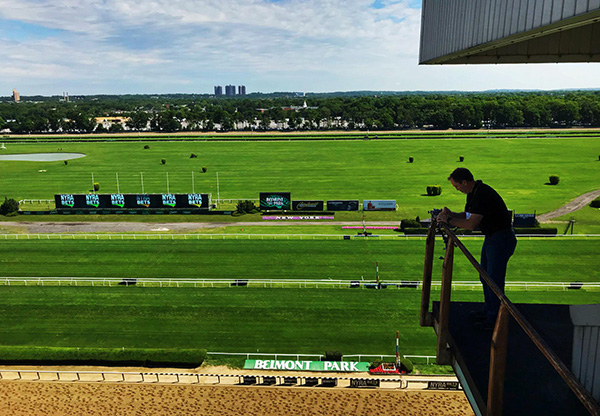
Michael Clevenger mounting a camera at Belmont Stakes getting ready for the race on Saturday. Photo Credit- Matt Stone
“At Churchill Downs, I had three or four cameras under the rail after the finish line. I had two or three on a “P Pole” (it’s shaped like the letter P) after the finish line. I had two or three on the starting gate. I had one camera located under the rail directly across from the twin spires. I had three or four located on and near a starter’s stand before the twin spires. I also had three or four other cameras in various locations ahead of the spires and after they have come onto the front stretch.”
Clevenger explains that placing a camera on the track is a lot like placing a bet on a horse. There are certain areas that are a sure bet, and there are those that you’re taking a gamble on. After all, nobody wants to be the photographer who missed getting the shot of the Triple Crown winner…
Clevenger recalls a famous shot that was taken by photographer, Wallace Lowry, entitled “Fighting Finish.” In his opinion, it has all of the elements of the day in perfect focus. When he places his own cameras at the track, he keeps this in mind. “Photojournalists tell stories through their images. Every image should try to help a viewer or reader understand the race. The day. The moment. The time. Good stories also contain layers.”
“Wallace Lowry’s Fighting Finish defined that to our generation of horse racing photographers. His photo has all of the elements of the day- the twin spires, the horses, the track, the crowd, and two jockeys fighting it out on the way to the finish line. All of the elements were layered together in one image to tell a story. So, when I place cameras at the track, I’m very conscious of where the horses will be on the track and what’s in the background of my photo.”
Of all the photos Clevenger has shot over the years, he has one particular favorite, and it involves another famous horse’s bid for the Triple Crown and a history-making finish. “The most popular image that I’ve ever made is also significant in this instance because it involves horse racing. In 2015, I was privileged to be able to cover American Pharoah winning the Triple Crown at the Belmont Stakes. I captured jockey Victor Espinoza glancing back at the three horses he had just beaten aboard AP. That’s one of my all-time favorite images because it was the end of the Triple Crown drought.”
But, Clevenger is the first to acknowledge that he cannot capture these images on his own. He relies on help from a number of assistants. But, interestingly enough, many of these helpers are close friends and not necessarily fellow photographers. After all, you need somebody you can trust at the racetrack.
“My assistants come from various backgrounds. They are attorneys, bookstore buyers, a former state archivist, a financier, a law student, an environmental engineer, and one equine trainer. When I shoot the race, I’m in a different spot than all of the other cameras. I’m at the top of the stretch looking at the horses coming at me at the entrance to the first turn. The area that I cover with my remote cameras is a quarter of a mile long. I can’t be in all of these places at once, so my assistants help me do that.”
“Long before the race, we pre-focus the cameras together, and then I talk with them about the timing of when to push the button. The button is on the end of a long string of lamp cord, and they are safely in the middle of the turf track. Each camera typically has its own button, but sometimes I’ll put multiple cameras on the same line so that they all fire at once.”
“After the race, my crews gather the memory cards out of each camera and rushes them into the work room so that I can begin to edit what we capture. After that, they break the cameras and lenses down so that they can be packed away.”
The conditions at this year’s Kentucky Derby were, in Clevenger’s words, “atrocious.” It goes without saying that electrical connections and water aren’t a good combination. “At one point, I wasn’t sure that we’d make it through race day with any of the remote cameras still functioning. The Canon cameras performed flawlessly and captured some amazing images. We didn’t lose any cameras or lenses from the weather.”
“I really like all of the remote images that my crew helped me capture. The photos have a very ethereal look at the finish line. Photos in the stretch are amazing because you can see just how miserable it was.”
The build up and anticipation, the excitement of the day, and the electric atmosphere are all aspects of the race that Clevenger and his photographers share in with millions of spectators. But there’s something these photojournalists feel that the spectators don’t, but the trainers, jockeys, and owners certainly do- stress, pressure, and nerves.
“Big events like the Kentucky Derby are always the most nerve-wracking. You’re always worried about not getting the shot. However, the photo staff of the Courier Journal is as good as any that I’ve ever seen. The race is covered from many different angles around the track and is very concentrated at the finish line. We have a wonderful team of very talented freelancers who help us cover the race, and we distribute them around the track to give us the best coverage. In the end, I know that, if I miss, someone will make it. That’s part of being with a great staff and great crew.”
We’re certain that Clevenger and his crew will deliver another spectacular performance at the Belmont Stakes on Saturday. But their efforts won’t be rewarded with a blanket of flowers, a shining trophy, or media acclaim. Their battle will be fought behind the scenes, in the trenches, capturing the magic moment that commemorate someone’s else’s success.
Click here to read Michael’s story, in his own words.










